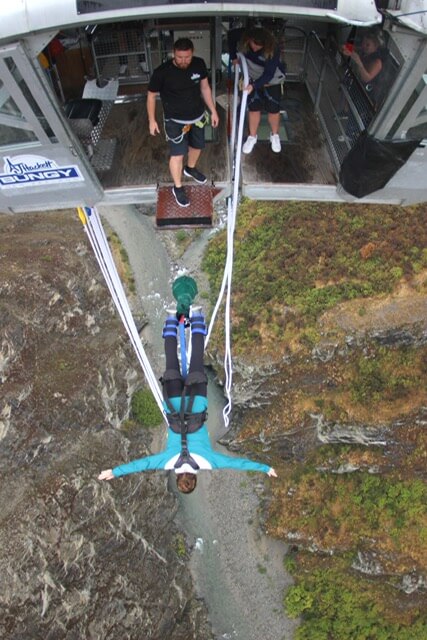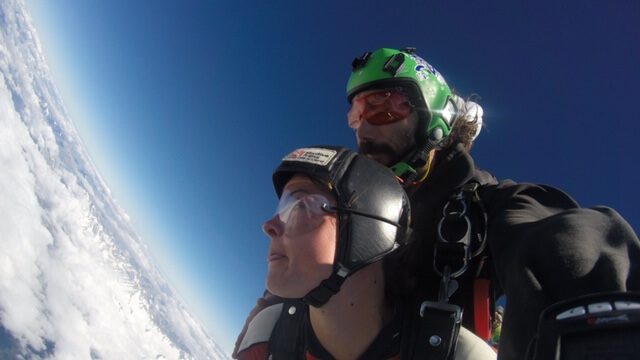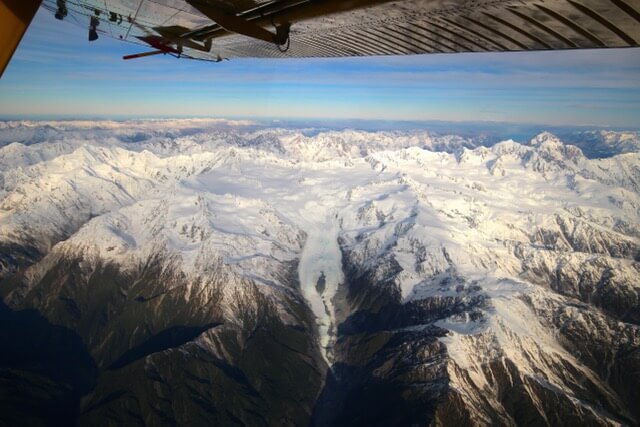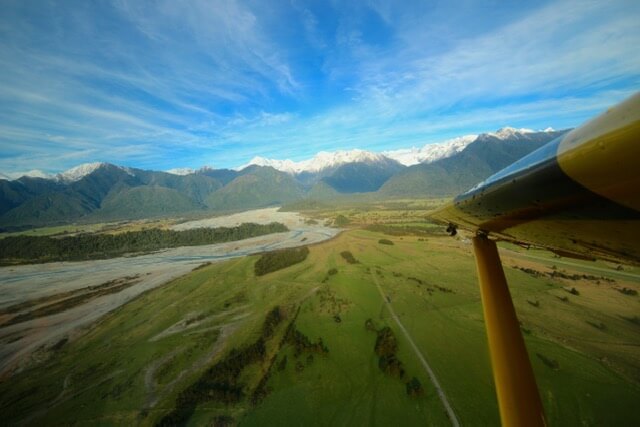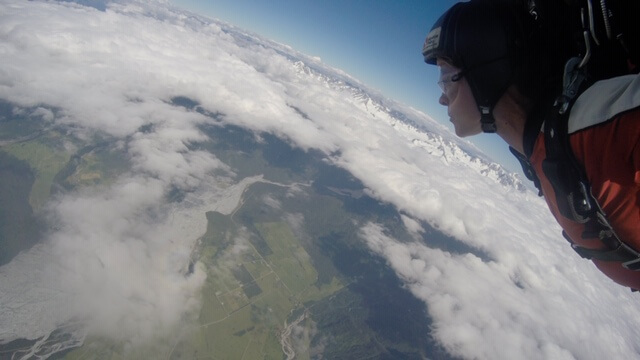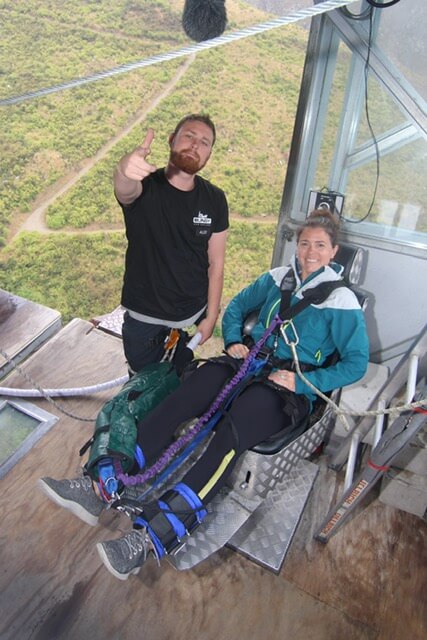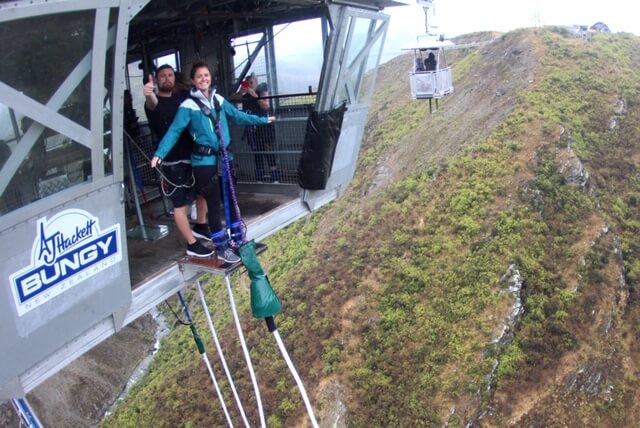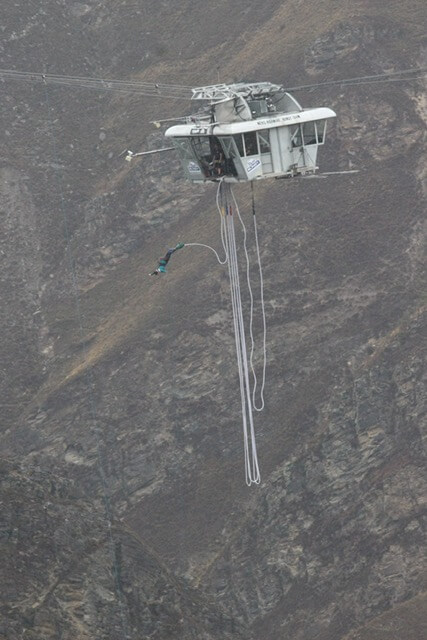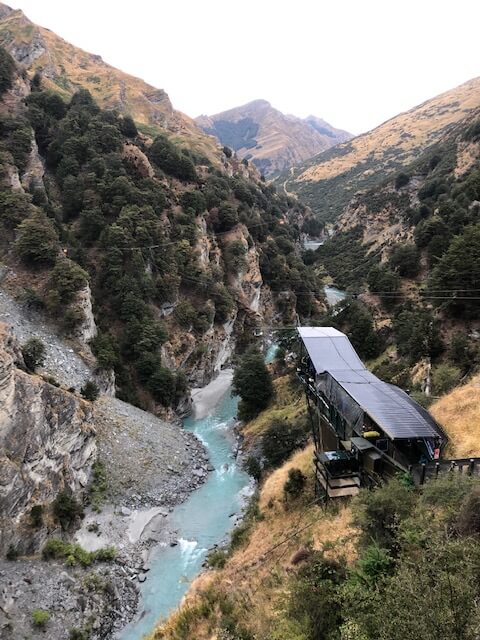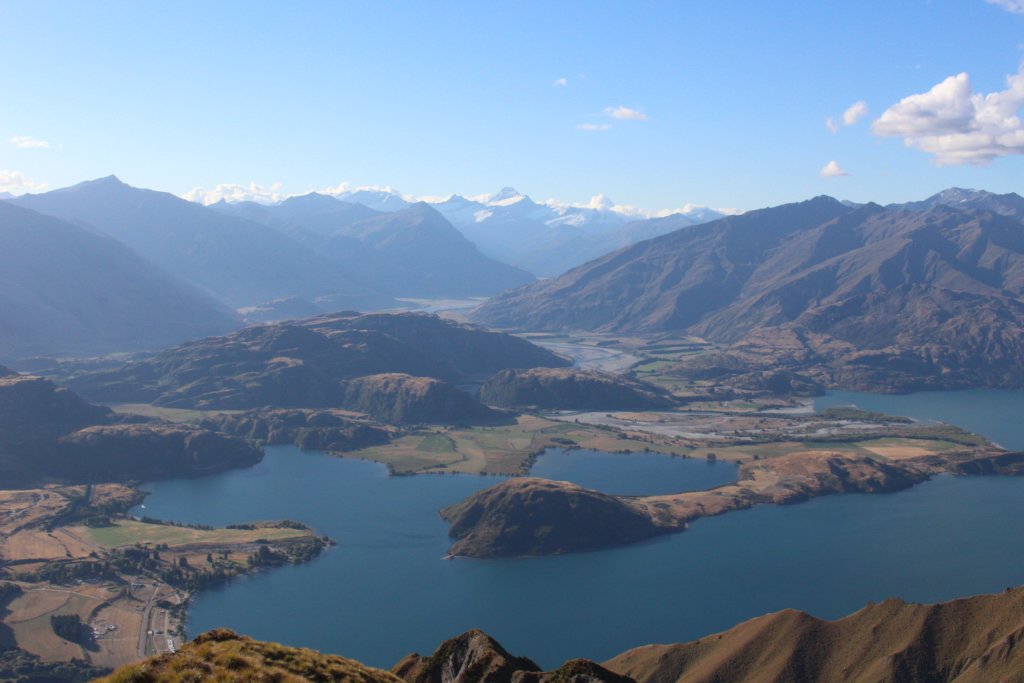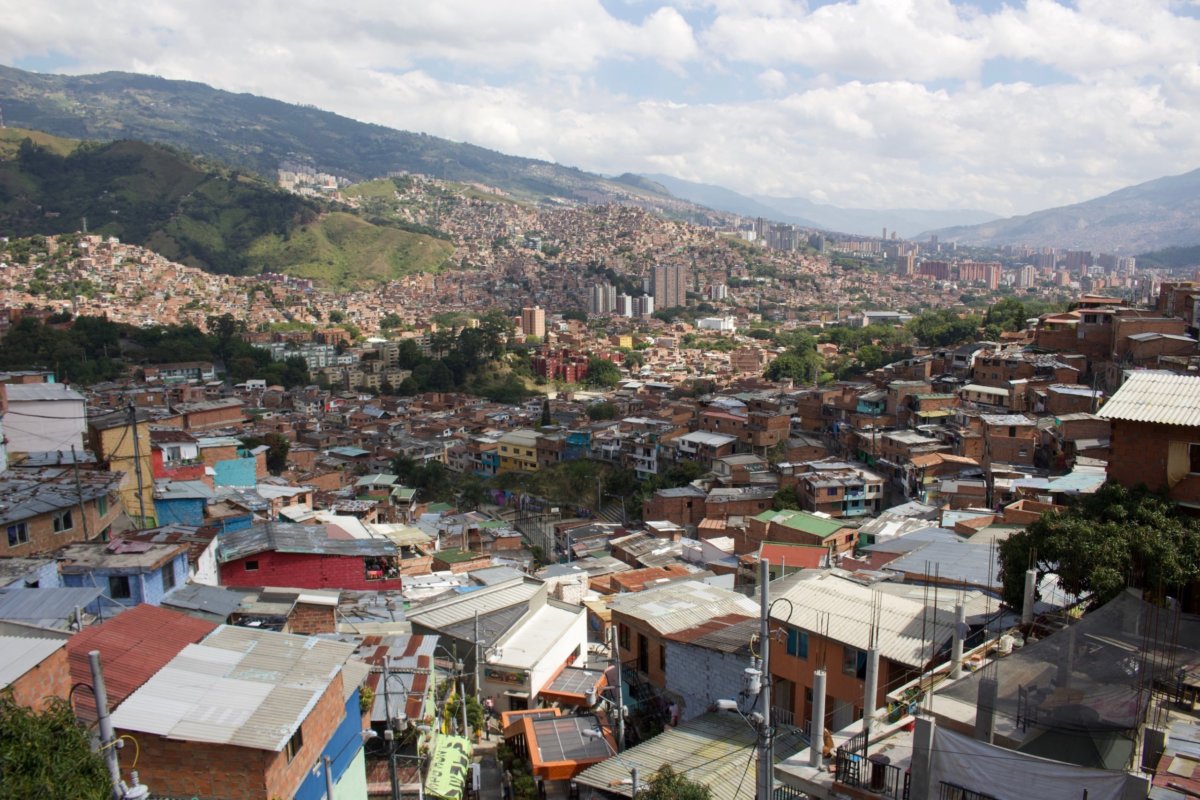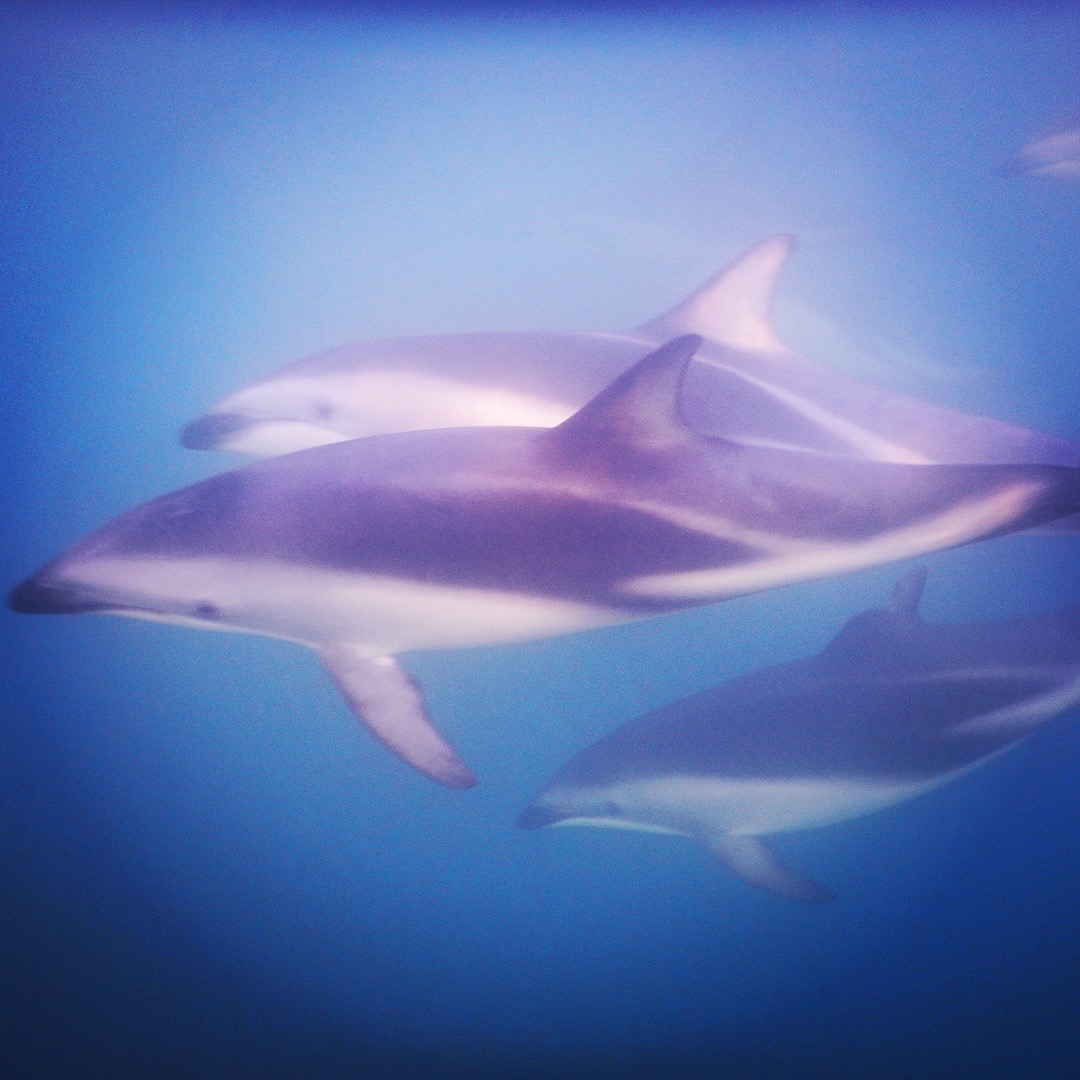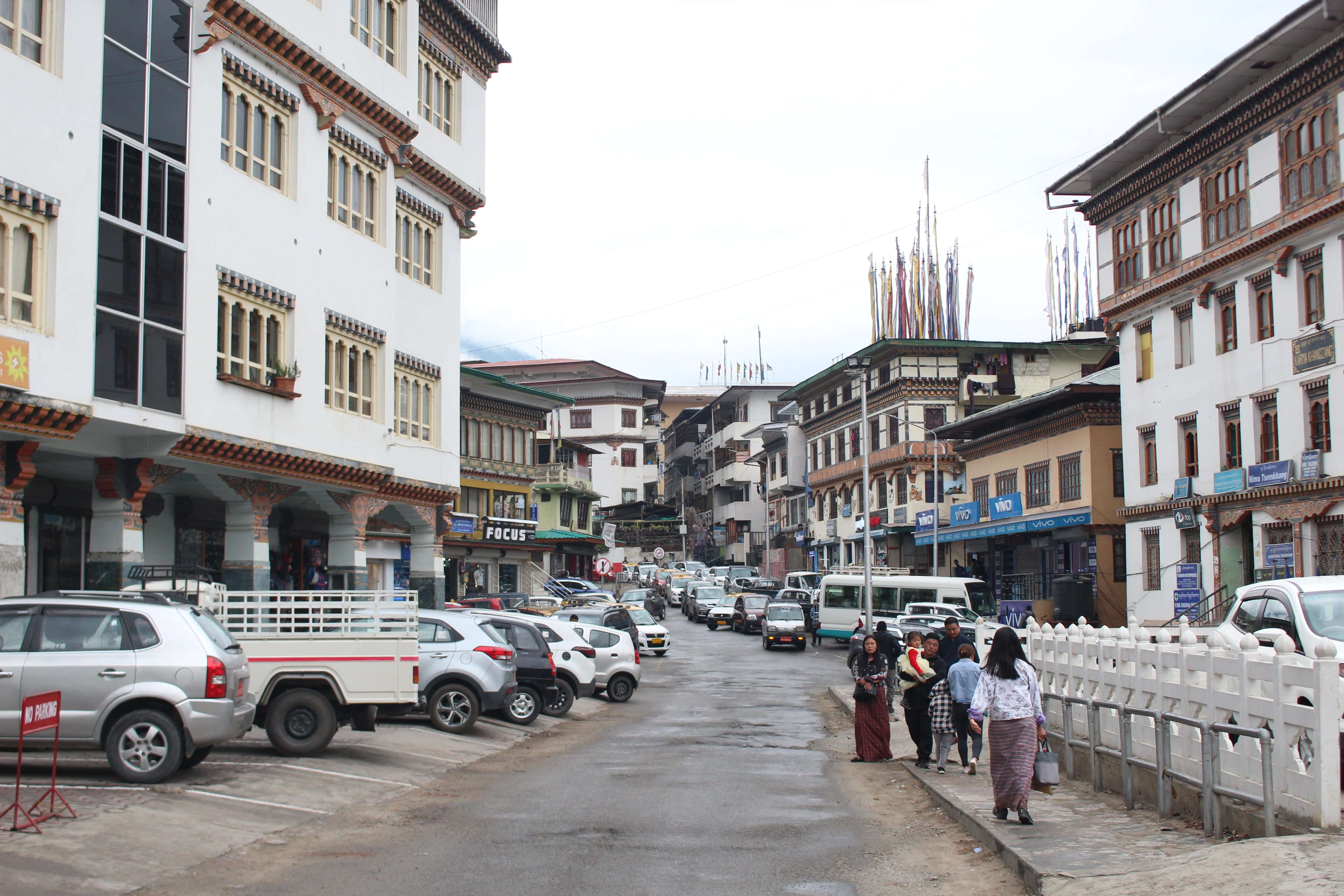Within seconds she was gone and the door slammed shut. We continued to climb, oxygen masks on, the tension increasing with every inch of elevation gained. Three thousand more feet and the hatch reopened. In a flash the next two disappeared, out of sight before I could blink. With a tap on my shoulder, Jack and I started inching along the floor, toward the exit. Cold air rushed in. The wind howled in all directions. My eyes automatically shut as my legs came to dangle thousands of feet above the ground. I heard a faint countdown and then what felt like nothingness.
As my brain regained functionality, I settled into the dive, spreading my arms wide to truly take it all in: the sea and sandy beach, the glacial covered mountains, with Mount Cook at the apex, the lush green farmlands below. My pounding heart soon subsided replaced with smiles of delight, as our joint bodies screamed through the air. Was I falling? Flying? Floating? It truly felt like all three simultaneously as we plummeted toward earth at a rate of 150 feet per second. Cries of excitement left my mouth bone dry, serving as the only tangible reminder that I was, in fact, racing toward the beautiful scenery below/earth.
Another countdown and my body jolted upward, the parachute blossoming into the cloudless sky. Thirteen thousand five hundred feet had come and gone in less than ninety seconds. Spinning in tight circles, we gently floated the remaining distance, watching those who’d jumped before glide toward land. Recognizing that as the earth inched nearer my experience edged closer and closer to ending, a sadness mixed with the intense high I felt. But time finally expired and with legs up, we came sliding in, returning to the firm ground of New Zealand.
As Jack detached us from the equipment and each other, I understood the need. I felt that rush, that feeling of both pure terror and absolute pleasure. The longer my feet stood on solid ground, the faster the sensation dissolved and the more I desired to recreate it. I knew that the remainder of my trip would involve finding that next dose, a bigger rush than the day before. And I knew I’d come to the right place to continually seek out and find this glorious sensation.
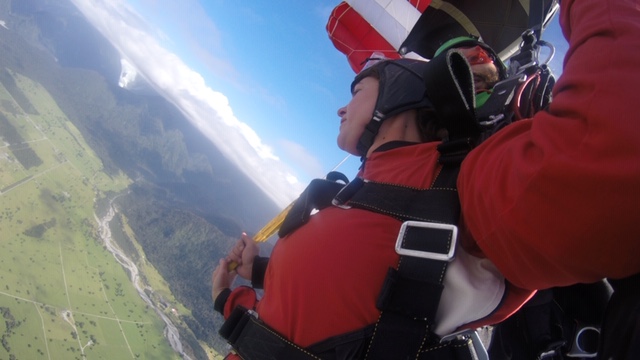
. 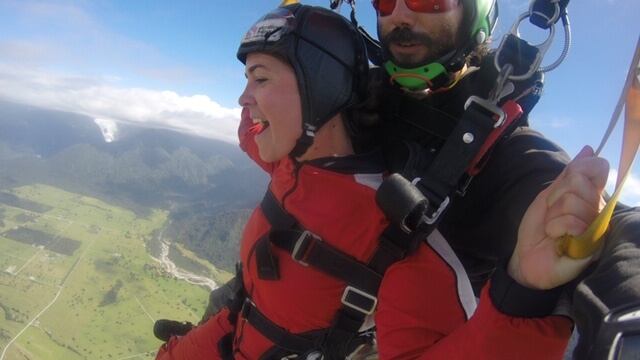
.
Considered the birthplace of adventure tourism, New Zealand, and Queenstown in particular, are world renowned for their adrenaline activities. For decades people have been drawn to the country, in the hopes of partaking in a life-changing, rejuvenating and thrilling experience. Initially the untouched wilderness and breathtaking hikes achieved that, fostering a sense of adventure and excitement within each hiker who immersed oneself into New Zealand’s landscape. In time, and with access, ski resorts and white water rafting establishments sprung up across the country, offering another means of experiencing the great outdoors.
While these adrenaline-like experiences, these opportunities that foster a feeling of physical exertion rewarded with spectacular views, continued to beckon travelers, the landscape of thrill seeking forever changed in 1988 when, on November 12th, AJ Hackett and Chris Sigglekow opened the world’s first commercial bungee jump.
Chris, a video editor, had seen footage of British men, part of a group known as the Oxford University Dangerous Sports Club, partaking in a similar activity to the Islanders. But rather than leaping from constructed towers, these individuals leapt from the Golden Gate Bridge in San Francisco. So inspired by their daring feat, Sigglekow had already attempted his own jump, off the Pelorus Bridge in Malborough, New Zealand, using a self-made bungee cord with a parachute harness. It was in this chance encounter, with this knowledge, and this history, that an idea began to take shape.
The two teamed up in the hopes of discovering a way to make the activity consistently safe because, as AJ Hackett stated, “if we can’t make it predictable [we’ll] stop– because I like a challenge but I don’t like pain. I don’t want to kill myself but I like to have some fun.” They reached out to the Department of Scientific and Industrial Research and discovered a mathematical formula for using bungee cord. With this information, all the two needed to know was the height of the bridge from which they jumped.
With a bungee cord of appropriate length, and a belief in the validity of this equation, in 1986 Hackett and Sigglekow set off to jump from the Greenhithe Bridge. Following a test weight, of lead and rocks, Chris prepared to take the plunge, followed shortly after by Hackett. Both jumps proved a success, which led them to try again in Hamilton, from a bridge 30 feet higher. From there, friends joined in on the fun, excited to experience the rush about which each jumper spoke. Each subsequent attempt took place from a higher or more complicated spot.
The more AJ Hackett jumped the more he wanted to test the theory and eventually found himself jumping from the Eiffel Tower, in Paris, France. Having measured its height, procured the right bungee, and mapped out the Tower’s security, he and his crew headed up, hiding the cord and sleeping bags underneath their clothing. Early the next morning, the team assembled the equipment and off he went. Police swarmed the base and his stunt gained worldwide attention. Bungee jumping was now on everyone’s mind.
A year later, understanding he’d stumbled upon something special, and that the rush he felt was exceptionally powerful, he opened the first commercial bungee jumping site, located at Kawarau Bridge, just outside of Queenstown. On opening day, twenty eight brave individuals paid $75 to leap 43 meters (141 feet) with a cord attached to their ankles. The rest, as they say, is history and still today, more than half a million venture to this exact spot, for the exact same activity.
It was with the birth of bungee jumping that a seed was planted. Throughout the entire country there developed a need to expand upon this invention, a desire to provide and, often times invent, the safest, newest, boldest, craziest adrenaline fueled activities. From the highest skydive in the Southern hemisphere to the 14th highest bungee jump in the world, you can truly find any and all activities to satisfy your high-octane desires. New Zealand’s become, undisputedly, the epicenter for all things adrenaline related. And now, thirty years later, visitors can experience this adrenaline rush repeatedly, and in more way than one.
Skydiving
New Zealand is one of, if not the safest places to throw yourself out of a plane. While numerous operators offer the opportunity, visitors most frequently take the leap in Abel Tasman (falling over beautiful sand beaches and crystal clear water) Franz Josef (for glacial, ocean and rainforest views, and, of course Queenstown (the center of all things adrenaline). You really can’t go wrong with any, although Franz Josef remains the only location offering a jump from 19,000 feet, the highest in the Southern hemisphere.
Bungee Jumping
Perhaps the main reason thrill seekers visit New Zealand and visitors won’t be disappointed. Queenstown has multiple options from Nevis (the country’s highest), to Kawarau Bridge (the country’s first), to The Ledge (a jump directly above the town). All are a part of AJ Hackett’s company and you can get discounts when signing up for more than one. If Queenstown isn’t on your itinerary, fear not. Rotorua, as part of their adventure park, Auckland (at the Harbor Bridge), and Taupo (you can touch the water) also offer bungee experiences. Choose based on how far you want to fall, the history of each location or the extras.
Paragliding/Hang gliding
Queenstown is also the birthplace of tandem paragliding. Bruce Grant launched the first commercial operation in 1990, not long after Hackett. Now visitors have multiple options, around the entire country, for participating in either. Hang gliders tend to have a faster maximum speed but both allow individuals to soar high above the landscape, taking in beautiful vistas while flying through the air.
Canyon Swing and Fox
Again, you’ll find the majority of these in Queenstown. The Canyon Fox, a more extreme version of a zip-line, involves moments where you jump from one line to another and are, for a second or two, flying un-attached to anything. The Canyon Swing comes in a few forms. One is similar to a bungee jump, as participants experience a significant freefall. However, rather than bouncing back up, you swing back and forth within the canyon. You can also leap from the platform in various ways (backwards, from a chair, upside down etc). The second feels more like a swing, just at a very fast rate and from very high heights. Either way, you’re bound to feel the adrenaline rush you seek.
The Hikes/Tramps
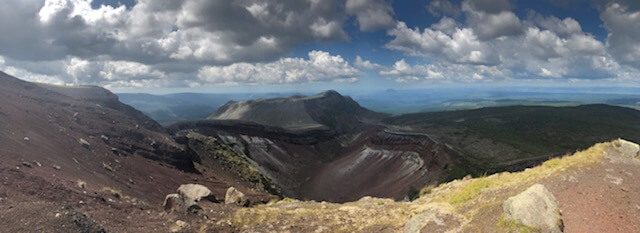
In the face of these other activities, you might be wondering how/if a hike can create a similar adrenaline rush. While slightly different, the right tramps (New Zealand’s word for a hike) can create an equally exhilarating sensation, one of physical accomplishment and breathtaking scenery. For day trips, look no further than the Tongariro Crossing (circling Mount Doom and its Emerald Lakes), Routeburn Track outside of Queenstown, or Roy’s Peak (for panoramic views of Lake Wanaka and Mount Cook). You can also find some of the world’s best multi-day treks, taking you Milford Sound, Arthur Pass and Abel Tasman.

